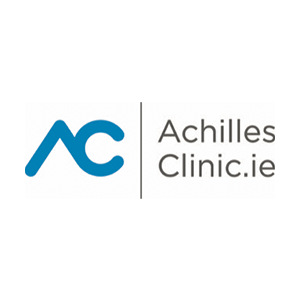
Achilles Tendinopathy vs. Achilles Rupture: Know the Difference
If you’ve been dealing with pain in the back of your heel or lower leg, your Achilles tendon might be to blame. This thick, rope-like tendon connects your calf muscles to your heel bone and plays a big role in walking, running, and even just standing on your toes.
But when something goes wrong with the Achilles tendon, it can lead to two very different problems: Achilles tendinopathy or an Achilles rupture. They both affect the same tendon, but they’re not the same injury.
Let’s talk through the difference—so you’ll know what to look for and when to get help.
What Is Achilles Tendinopathy?
Achilles tendinopathy is when the tendon becomes damaged from overuse or repeated strain over time. This isn’t a sudden injury—it builds up slowly. It’s very common in runners, walkers, or anyone who’s recently increased their activity levels quickly. Even wearing the wrong shoes can contribute.
You might notice a dull ache in the back of your heel or lower leg. It may feel stiff when you first get up in the morning or sore after a walk. The tendon could feel tender when you press on it, and the pain often gets worse with activity—especially when going uphill or climbing stairs.
It’s your body’s way of saying, “I’m under too much pressure right now.”
What Is an Achilles Rupture?
An Achilles rupture is much more dramatic. It’s when the tendon tears, either partially or fully. This usually happens during a sudden, forceful movement—like sprinting off the mark or jumping awkwardly. Many people describe the moment it happens as feeling like they were kicked or hit in the back of the leg, even though no one was there.
You might hear a “pop” or snapping sound. The pain is sharp and sudden, and walking becomes very difficult. You probably won’t be able to push off your foot properly. Swelling, bruising, and weakness often follow.
Unlike tendinopathy, a rupture is a medical emergency. It won’t go away on its own and needs urgent care.
How We Can Help at Achilles Foot Clinic
Whether your Achilles pain came on slowly or all at once, the sooner we see you, the better your outcome will be.
For Achilles Tendinopathy, we’ll begin with a full assessment to understand exactly what’s going on. Then we’ll put together a treatment plan that might include:
Specific exercises to strengthen and stretch the tendon
Shockwave therapy to help stimulate healing
Custom orthotics to support your foot and reduce pressure on the tendon
Advice on shoes and activity changes to protect the area while it heals
The goal is to ease the pain, fix the root cause, and help you stay active while you recover.
For a suspected Achilles Rupture, we’ll perform clinical tests and get you referred for imaging quickly. Some patients may need surgery, while others might be able to recover with a walking boot and rehab. We’ll also guide you through your recovery, help with rehab exercises, and keep an eye on your progress to prevent future injuries.
Don’t Put It Off – Let’s Get You Sorted
It’s easy to brush off early signs of Achilles pain as nothing serious—but catching it early can help you avoid bigger problems down the line.
And if you’ve had a sudden, sharp pain in your heel or calf, don’t wait. Come see us as soon as you can so we can get you back on track safely.
At Achilles Foot Clinic in Ballincollig, we’re here to help you move without pain, with the right care tailored just for you.
